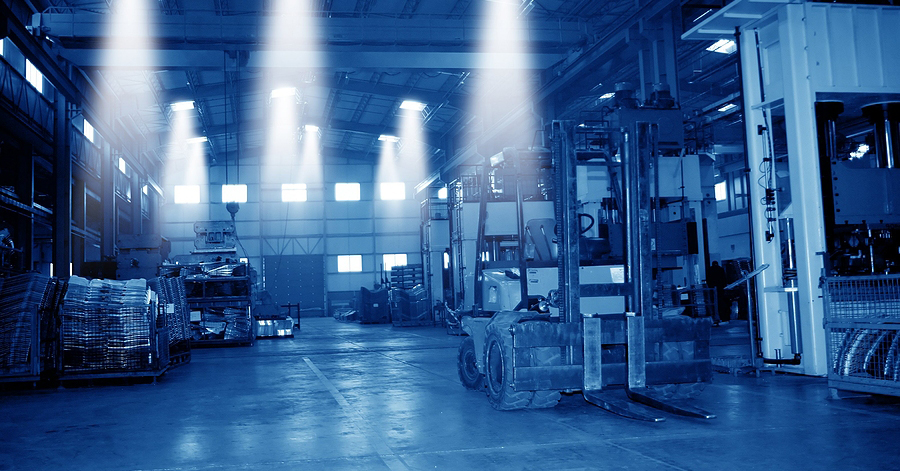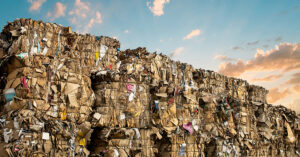Warehouses generate a significant amount of waste, from cardboard and plastic packaging to foam and industrial scrap.
Managing this waste efficiently is essential for keeping operations smooth, maintaining a clean workspace, and reducing disposal costs. The right baler can help streamline waste management, improve recycling efforts, and even generate revenue from recyclable materials.
But with so many options available, how do you choose the best baler for warehouses? In this guide, we’ll break down the key factors to consider, explore different types of balers, and help you find the best fit for your warehouse needs.
Understanding Warehouse Waste and Recycling Needs
Common Types of Waste in Warehouses
Warehouses produce a variety of recyclable waste materials that need to be compacted efficiently:
- Cardboard (OCC – Old Corrugated Cardboard): A primary waste product in warehouses, cardboard takes up considerable space if not baled.
- Plastic Wrap & Shrink Film: Found in almost every warehouse, plastic packaging requires a baler designed for soft, flexible materials.
- Foam & Packaging Materials: Lightweight but bulky, requiring special compression techniques.
- Metal & Industrial Scrap: Less common in general warehouses but prevalent in manufacturing and logistics hubs, requiring heavy-duty balers.
Key Benefits of Using a Baler in a Warehouse
- Space Optimization: Reduces clutter and improves workflow by condensing waste into compact bales.
- Cost Savings: Decreases waste disposal fees and provides potential revenue from recyclable materials.
- Environmental Compliance: Helps warehouses meet sustainability initiatives and regulatory standards.
Types of Balers for Warehouses
Selecting the right baler depends on factors such as waste volume, available space, and operational needs.
Vertical Balers: Best for Space-Constrained Warehouses
- Compact and space-efficient – Ideal for smaller warehouses or facilities with limited room.
- Cost-effective – Lower initial investment compared to horizontal balers.
- Manual operation – Requires workers to load and monitor the machine.
- Best for: Warehouses dealing with moderate amounts of cardboard, plastic wrap, and textiles.
Horizontal Balers: Best for High-Volume Warehouses
- Higher efficiency – Capable of handling large amounts of recyclable materials.
- Automated operation – Reduces labor requirements and improves processing speed.
- Larger footprint – Requires significant floor space for installation.
- Best for: High-volume distribution centers or warehouses processing continuous waste streams.
Two-Ram Balers: Best for Multi-Material Warehouses
- Versatile processing – Can compact multiple materials, including cardboard, plastics, and metals.
- High compression force – Produces dense bales that optimize transportation and storage efficiency.
- Higher investment – More expensive but offers long-term cost savings.
- Best for: Warehouses managing mixed recyclables or requiring flexibility in waste management.
Auto-Tie Balers: Best for Fully Automated Warehouses
- Fully automated operation – Reduces labor dependency by automatically tying bales.
- Continuous baling capability – Ideal for warehouses with nonstop waste production.
- Higher upfront cost – Requires a significant investment but improves overall efficiency.
- Best for: Large-scale warehouses and distribution centers with a high volume of recyclable materials.
Key Factors to Consider When Choosing a Warehouse Baler
1. Waste Volume & Material Type
The first step in selecting the best baler for warehouses is to assess the volume and type of waste your facility generates. If your warehouse primarily deals with cardboard, a vertical baler may suffice. However, if you process large amounts of plastic, foam, or mixed recyclables, a two-ram or auto-tie baler may be a better fit.
2. Available Space & Installation Requirements
Balers vary in size, from compact vertical units to large horizontal models. Consider:
- Ceiling height restrictions
- Floor space availability
- Electrical and hydraulic system requirements
3. Automation vs. Manual Operation
While manually operated balers require more labor, fully automated systems streamline waste management. If your warehouse has the workforce to handle a vertical baler, it may be a cost-effective solution. However, high-volume warehouses should consider automation for efficiency and labor savings.
4. Baling Output & Efficiency
- Compression rate: A higher compression force means denser bales, reducing transportation and storage costs.
- Bale weight: Ensure the baler produces bales within standard weight requirements for easy transport and resale.
5. Cost & Return on Investment (ROI)
A baler is an investment that can lead to long-term savings. Factor in:
- Initial purchase price
- Maintenance and repair costs
- Potential revenue from selling bales to recyclers
6. Compliance & Safety Considerations
Ensure that the baler meets OSHA and ANSI safety regulations. Look for features such as:
- Emergency stop buttons
- Safety interlocks
- Automatic shutoff functions
Best Balers for Different Warehouse Scenarios
Best for Small Warehouses with Limited Space
- Recommended Baler: Vertical Baler
- Why? Affordable, space-efficient, and ideal for moderate waste volumes.
Best for High-Volume Warehouses
- Recommended Baler: Horizontal Baler
- Why? Handles large quantities efficiently with automated operation.
Best for Warehouses Handling Multiple Materials
- Recommended Baler: Two-Ram Baler
- Why? Processes diverse waste streams with high compression force.
Best for Fully Automated Distribution Centers
- Recommended Baler: Auto-Tie Horizontal Baler
- Why? Reduces labor dependency and optimizes continuous waste processing.
Why Choose Nanoia Recycling Equipment for Your Warehouse Baler?
At Nanoia Recycling Equipment, we don’t just provide balers—we deliver comprehensive waste management solutions. Whether you need a compact vertical baler or a high-capacity auto-tie system, we offer:
- Custom Recommendations: Our experts analyze your warehouse needs and suggest the most efficient baler.
- Turnkey Solutions: From design and fabrication to delivery, installation, and financing, we handle everything.
- Reliable Equipment: We provide high-quality balers designed for durability and maximum efficiency.
- Ongoing Support: We offer maintenance, repair services, and operator training to ensure seamless operations.
📞 Contact Nanoia Recycling Equipment today to find the best baler for your warehouse and optimize your recycling process!






